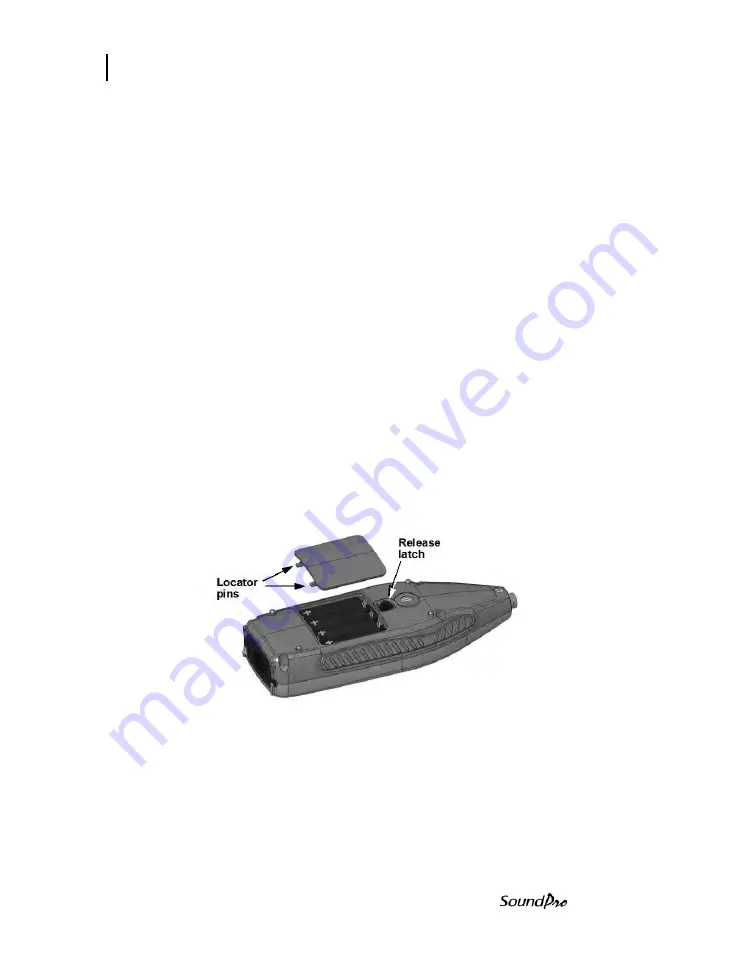
14
Providing power
Installing Batteries
Models SE and DL
Providing power
You can power the instrument with internal batteries or from an external power
source. There are two optional sources which include a universal power supply
9V/.66A 2.1 mm and an auto DC jack cable 12V. (See Optional Parts, in Appendix
A for more details.)
Installing Batteries
The instrument requires four AA-sized batteries. Disposable alkaline batteries
are satisfactory, but you may also use rechargeable Nickel Metal Hydride
(NiMH) batteries.
•
Rechargeable batteries
~ The instrument does not contain a recharging
circuit. Recharge batteries externally using the recharging device
available from 3M or a compatible device available elsewhere.
•
Selecting batteries
~ Do not mix battery types or batteries with
significantly different charge levels.
NOTE: To avoid possible battery leakage, remove the batteries when the
meter is not in use for prolonged periods.
To install batteries
1. With the back of the instrument facing up, push the release latch to pop
open the battery lid (Figure 2-1).
Figure 2-4
:
Installing batteries
2. Lift off the lid and set aside. Wedge out the four batteries.
3. Replace the batteries with fresh batteries, taking care that you orient all
batteries with the positive ends toward the base, as shown in the drawing.
4. Re-insert the lid by fitting its locator pins into slots in the base end of the
battery compartment. The lid should fit snugly when correctly inserted.
Summary of Contents for SP-DL-1
Page 1: ...3M Personal Safety Division 3MTM SoundPro SE DL SeriesSound Level Meters SoundProUser Manual ...
Page 13: ...xii Table of Contents Models SE and DL This page left blank intentionally ...
Page 35: ...22 Turning off Navigating Models SE and DL This page left blank intentionally ...
Page 69: ...56 Communications GPS Models SE and DL This page left blank intentionally ...
Page 89: ...76 Back erasing Stopping a session Models SE and DL This page left blank intentionally ...
Page 137: ...AC DC output DC output 124 Models SE and DL This page left blank intentionally ...
Page 149: ...Appendix A 136 Models SE and DL Block Diagram for SoundPro ...
Page 161: ...Appendix B 148 Models SE and DL This page left blank intentionally ...
















































